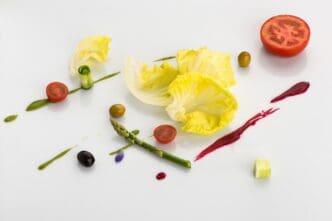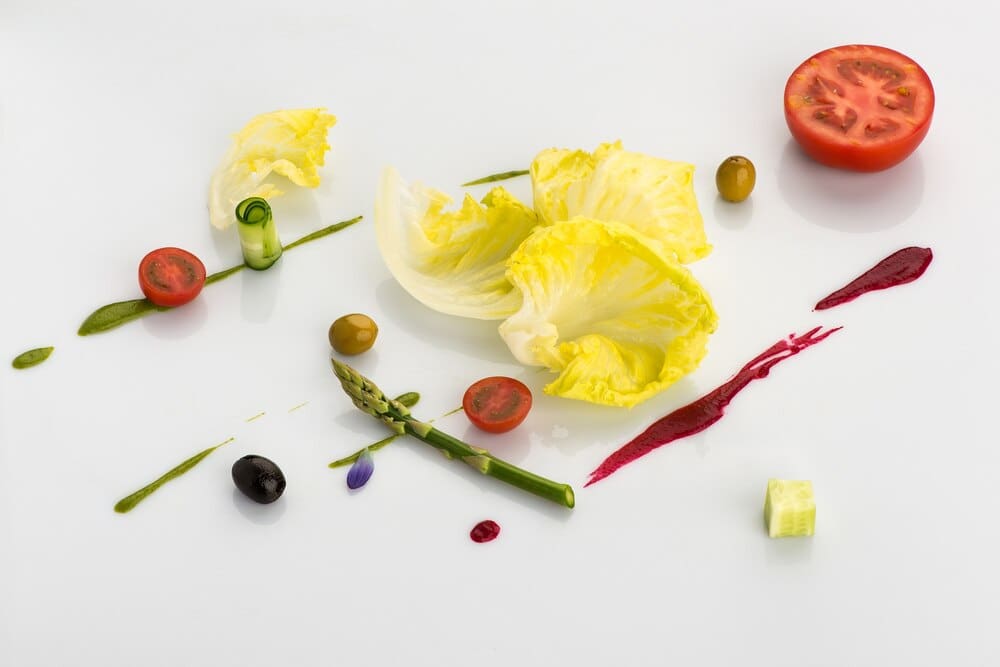Transforming a simple bowl of greens into a nutritious, crave-worthy meal often comes down to one key component: the dressing. For anyone seeking to elevate their health, control their ingredients, and add vibrant flavor to their diet, the solution is found right in their own kitchen. Making your own salad dressings at home is a simple, cost-effective practice that empowers you to ditch the hidden sugars, unhealthy fats, and artificial additives lurking in most store-bought options. By understanding a few basic formulas and stocking your pantry with wholesome staples, you can craft an endless variety of delicious, healthy dressings in minutes, ensuring your salads are as beneficial as they are beautiful.
Why Ditch Store-Bought Dressings? The Hidden Downsides
That colorful bottle on the supermarket shelf might promise convenience, but it often conceals a cocktail of ingredients that can undermine your health goals. A quick scan of the nutrition label reveals why homemade is the superior choice for your well-being.
The Sugar Trap
Many commercial dressings, especially “light” or “fat-free” varieties, compensate for the lack of fat by loading up on sugar. Ingredients like high-fructose corn syrup, cane sugar, and maltodextrin are frequently used to enhance flavor and texture, turning a healthy salad into a source of empty calories and potential blood sugar spikes.
Unhealthy Fats and Oils
The primary ingredient in most creamy and vinaigrette-style dressings is oil. Unfortunately, manufacturers often opt for highly refined and processed oils like soybean, canola, or generic vegetable oil. These are typically high in omega-6 fatty acids, which, when consumed in excess relative to omega-3s, can contribute to inflammation in the body.
Excess Sodium and Preservatives
To ensure a long shelf life, bottled dressings are packed with sodium and chemical preservatives. A single two-tablespoon serving can contain a significant portion of your recommended daily sodium intake. Additives like potassium sorbate and calcium disodium EDTA are used to prevent spoilage but offer no nutritional value.
Artificial Ingredients
From artificial colors that give a ranch dressing its pristine white hue to flavor enhancers like monosodium glutamate (MSG) and thickeners like xanthan gum, the ingredient list can be long and mystifying. These synthetic components are designed for commercial appeal, not for your personal health.
The Anatomy of a Perfect Homemade Vinaigrette: A Simple Formula
The most fundamental and versatile dressing is the vinaigrette. Forget complex recipes and embrace a simple ratio that you can customize endlessly. The classic starting point is three parts oil to one part acid, but you can adjust this to your taste, often moving closer to a 2:1 ratio for a tangier result.
Part 1: The Oil (The Base)
The oil provides the rich body of the dressing and helps your body absorb the fat-soluble vitamins (A, D, E, and K) present in your salad’s vegetables. Choose high-quality, cold-pressed oils for the best flavor and nutritional profile.
Excellent choices include Extra Virgin Olive Oil (EVOO), with its robust, peppery flavor and heart-healthy monounsaturated fats. Avocado oil offers a milder, buttery taste and a high smoke point, while walnut or flaxseed oil provide a valuable source of plant-based omega-3 fatty acids, though they are more delicate and should not be heated.
Part 2: The Acid (The Tang)
The acid component cuts through the richness of the oil, adding a bright, zesty counterpoint that awakens the palate. You have a wide array of options, each bringing a unique character to the final product.
Balsamic vinegar offers a complex sweetness ideal for salads with fruit or cheese. Apple cider vinegar provides a sharp, fruity tang that pairs well with heartier greens. Red and white wine vinegars are classic, all-purpose choices, while fresh citrus juices like lemon or lime lend an unparalleled freshness.
Part 3: The Flavor (The Personality)
This is where you can truly get creative. Flavor additions not only build complexity but also include emulsifiers, which help bind the oil and acid together to prevent separation.
A teaspoon of Dijon mustard is a classic emulsifier that adds a savory kick. For sweetness and binding power, a small amount of raw honey or pure maple syrup works wonders. Minced garlic, finely chopped shallots, and fresh or dried herbs like dill, parsley, basil, or oregano are essential for building layers of flavor. A pinch of salt and freshly ground black pepper are non-negotiable for balancing the taste.
Beyond the Vinaigrette: Creamy, Dreamy Dressings Made Healthy
If you crave the rich texture of a creamy dressing, you don’t have to resort to mayonnaise or sour cream-based recipes. Wholesome, nutrient-dense ingredients can create a luscious consistency while adding significant health benefits.
The Greek Yogurt Base
Plain Greek yogurt is a nutritional powerhouse, packed with protein and probiotics. It serves as a fantastic base for a healthy ranch or blue cheese-style dressing. Simply whisk it with a splash of lemon juice or vinegar, fresh herbs like dill and chives, and a little garlic and onion powder for a guilt-free classic.
The Avocado Advantage
For a dose of healthy monounsaturated fats and a velvety smooth texture, look no further than a ripe avocado. Blending half an avocado with lime juice, cilantro, a splash of water, and a pinch of salt creates a vibrant green dressing perfect for taco salads or drizzling over grilled chicken.
The Power of Tahini
Made from ground sesame seeds, tahini is a staple in Mediterranean and Middle Eastern cuisines. It creates a wonderfully nutty and creamy dressing when whisked with lemon juice, minced garlic, and water. Thin it with water to your desired consistency for a dressing that’s perfect on everything from falafel salads to roasted vegetables.
The Cashew Cream Secret
For a truly decadent, dairy-free creamy dressing, soaked raw cashews are the secret weapon. After soaking in hot water for about 30 minutes, they become soft and blend into a luxurious cream. Blend soaked cashews with water, lemon juice, Dijon mustard, and nutritional yeast for a surprisingly convincing and entirely plant-based Caesar dressing.
Step-by-Step Recipes to Get You Started
Putting this knowledge into practice is easy. Keep a glass jar with a tight-fitting lid on hand for simple mixing and storage.
Classic Balsamic Vinaigrette
Combine 1/2 cup extra virgin olive oil, 3 tablespoons balsamic vinegar, 1 teaspoon Dijon mustard, 1 minced garlic clove, 1/2 teaspoon salt, and 1/4 teaspoon black pepper in a jar. Seal the lid and shake vigorously until well combined and emulsified.
Lemon-Herb Tahini Dressing
In a small bowl, whisk together 1/3 cup tahini, 1/3 cup water, the juice of one lemon (about 3 tablespoons), 1 minced garlic clove, and 1/4 teaspoon salt. The mixture may seize up at first; keep whisking until it becomes smooth and creamy. Stir in 2 tablespoons of chopped fresh parsley or dill.
Healthy Greek Yogurt Ranch
In a bowl, mix 1 cup of plain Greek yogurt, 1 tablespoon of fresh lemon juice, 1 tablespoon each of finely chopped fresh dill and chives, 1/2 teaspoon each of garlic powder and onion powder, and salt and pepper to taste. For a thinner consistency, stir in a tablespoon of milk or water.
Tips for Success: Storage and Customization
Making your own dressing is a forgiving process that encourages experimentation. Keep a few best practices in mind to ensure delicious results every time.
Essential Tools and Storage
A simple mason jar is the best tool for the job; you can measure, mix, and store your dressing all in one container. Vinaigrettes can be stored in the refrigerator for up to two weeks. Creamy dressings with yogurt, avocado, or fresh herbs should be used within 3 to 5 days. The oil may solidify in the cold, so let the dressing sit at room temperature for 15 minutes and shake well before serving.
Mastering Customization
Think of these formulas as templates. If you’re making a Mexican-inspired salad, use lime juice as your acid and add cilantro and a pinch of cumin. For an Asian-style dressing, try rice vinegar and a touch of sesame oil and grated ginger. The possibilities are limitless and entirely up to you.
By taking a few minutes to whisk together your own salad dressing, you do more than just enhance a meal. You take a powerful step toward a healthier lifestyle, gaining complete control over your nutrition while saving money and unlocking a world of fresh, vibrant flavor. It’s a small kitchen habit that delivers a significant and delicious return on your investment in your well-being.







